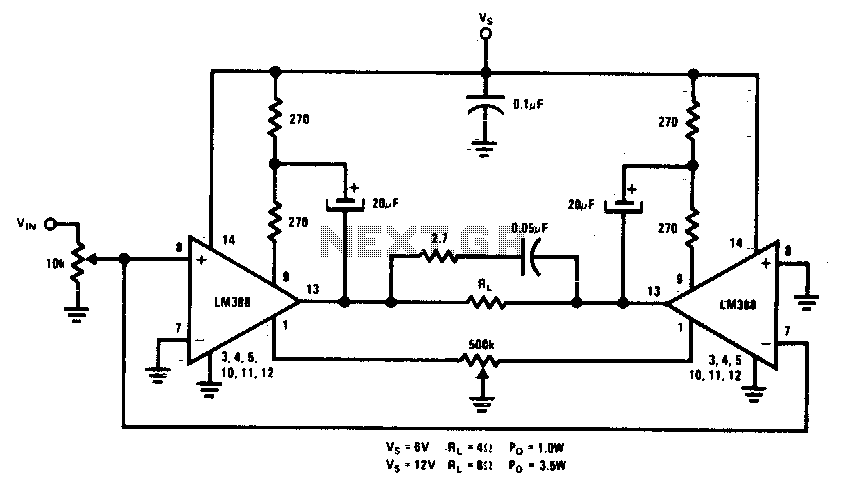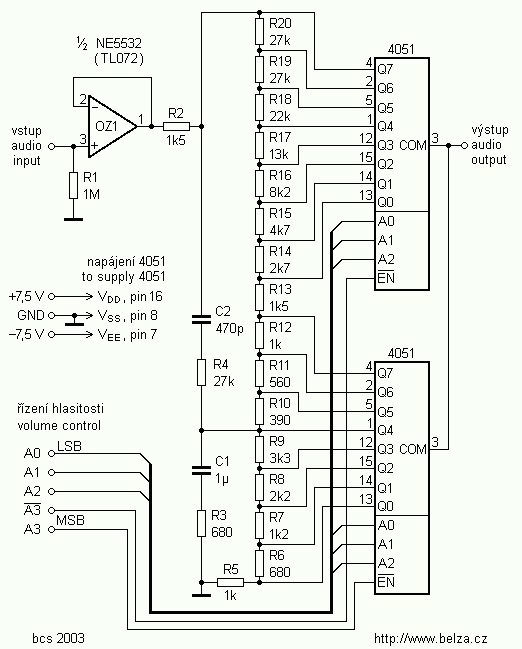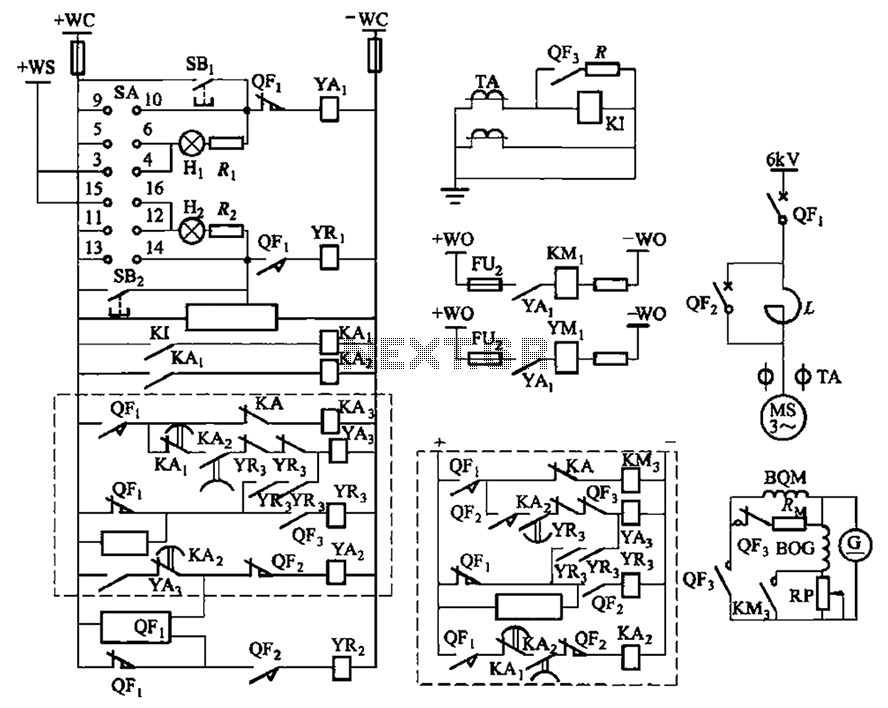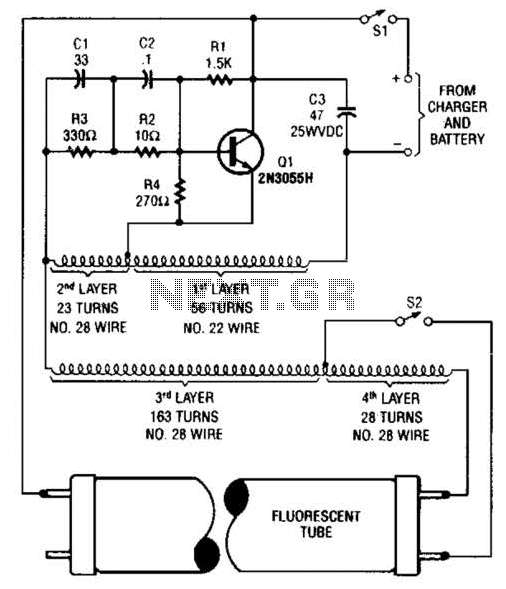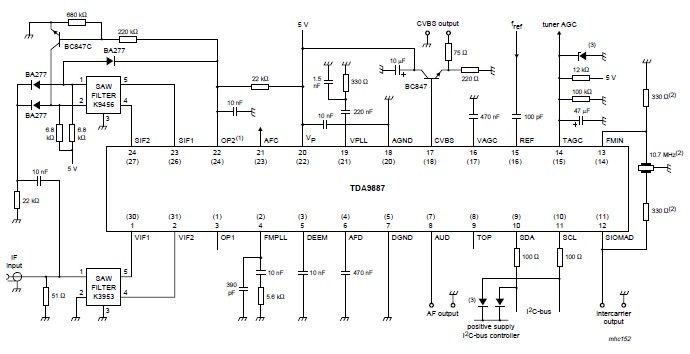
2 X 20 W car amplifier circuit with TDA2009 Schematic Diagram
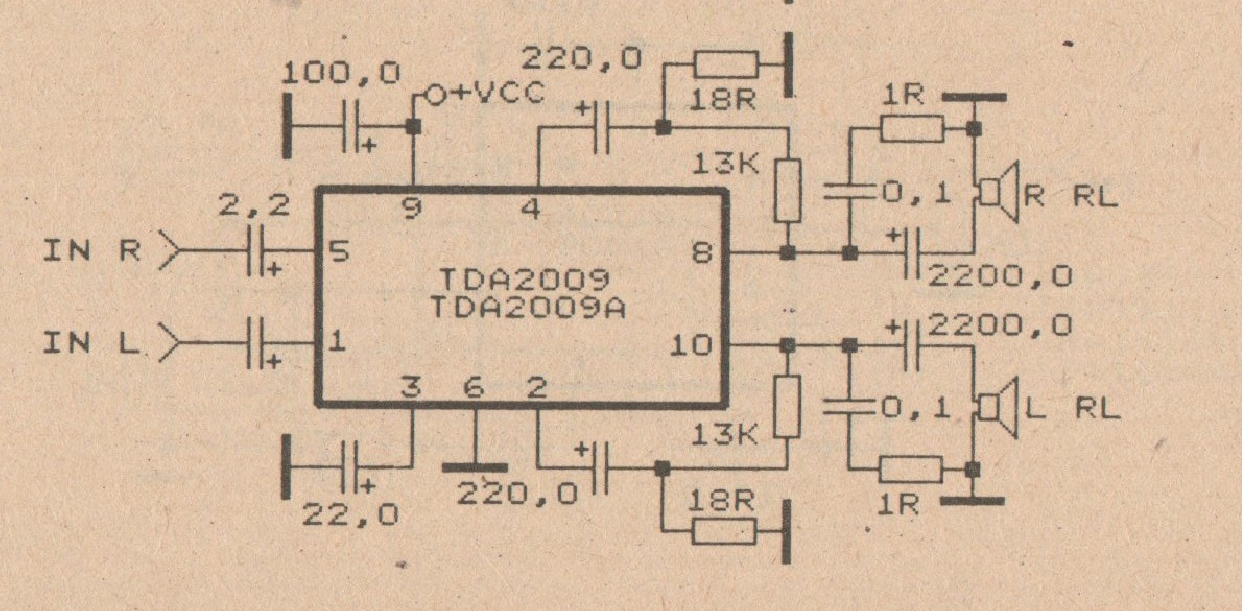
The minimum voltage required for this circuit is 8 volts, while the maximum voltage is 28 volts. It can be used to amplify audio signals in electronic devices such as radios, DVDs, MP4 players, and MP5 players. The circuit outputs a maximum power of 2 x 20 watts with an impedance of 4 ohms. This is a stereo amplifier circuit, which can also be utilized as a car amplifier due to its compatibility with subwoofer speakers.
This circuit is designed to function as a stereo amplifier, delivering robust audio performance suitable for various electronic devices. The operational voltage range of 8 to 28 volts allows for versatility in applications, making it suitable for both home and automotive audio systems. The amplifier's capability to output 2 x 20 watts at an impedance of 4 ohms ensures that it can drive a range of speakers effectively, providing clear and powerful sound reproduction.
The TDA2009 integrated circuit is at the heart of this amplifier design, known for its efficiency and reliability in audio amplification. It includes built-in features such as short-circuit protection, thermal shutdown, and a low noise level, which contribute to its performance in both home and vehicle audio systems. The circuit's design allows for easy integration with subwoofers, enhancing the low-frequency response and overall audio experience.
The schematic diagram accompanying this description illustrates the connections and components used in the circuit. Key components include resistors, capacitors, and the TDA2009 IC, which work together to ensure optimal signal amplification and quality. Proper layout and component selection are crucial for minimizing distortion and maximizing output power while maintaining thermal stability.
This stereo amplifier circuit is an excellent choice for enhancing the audio capabilities of various devices, making it a valuable addition to any audio enthusiast's toolkit.Minimum Voltage required for this circuit 8 volt and maximum voltage 28 volt. Its can use to amplifier on the electronic devices such us Radio, DVD, MP4, MP5, and etc. To amplify the signal sound to audio sound, Maximum output power 2 x 20 Watts with impedance 4 ohm. The circuit is stereo amplifier. You can use the circuit to car amplifier b ecause support to subwoofer speaker. See schematic diagram below : You are reading the Circuits of 2 X 20 W car amplifier circuit with TDA2009 And this circuit permalink url it is 🔗 External reference
This circuit is designed to function as a stereo amplifier, delivering robust audio performance suitable for various electronic devices. The operational voltage range of 8 to 28 volts allows for versatility in applications, making it suitable for both home and automotive audio systems. The amplifier's capability to output 2 x 20 watts at an impedance of 4 ohms ensures that it can drive a range of speakers effectively, providing clear and powerful sound reproduction.
The TDA2009 integrated circuit is at the heart of this amplifier design, known for its efficiency and reliability in audio amplification. It includes built-in features such as short-circuit protection, thermal shutdown, and a low noise level, which contribute to its performance in both home and vehicle audio systems. The circuit's design allows for easy integration with subwoofers, enhancing the low-frequency response and overall audio experience.
The schematic diagram accompanying this description illustrates the connections and components used in the circuit. Key components include resistors, capacitors, and the TDA2009 IC, which work together to ensure optimal signal amplification and quality. Proper layout and component selection are crucial for minimizing distortion and maximizing output power while maintaining thermal stability.
This stereo amplifier circuit is an excellent choice for enhancing the audio capabilities of various devices, making it a valuable addition to any audio enthusiast's toolkit.Minimum Voltage required for this circuit 8 volt and maximum voltage 28 volt. Its can use to amplifier on the electronic devices such us Radio, DVD, MP4, MP5, and etc. To amplify the signal sound to audio sound, Maximum output power 2 x 20 Watts with impedance 4 ohm. The circuit is stereo amplifier. You can use the circuit to car amplifier b ecause support to subwoofer speaker. See schematic diagram below : You are reading the Circuits of 2 X 20 W car amplifier circuit with TDA2009 And this circuit permalink url it is 🔗 External reference
